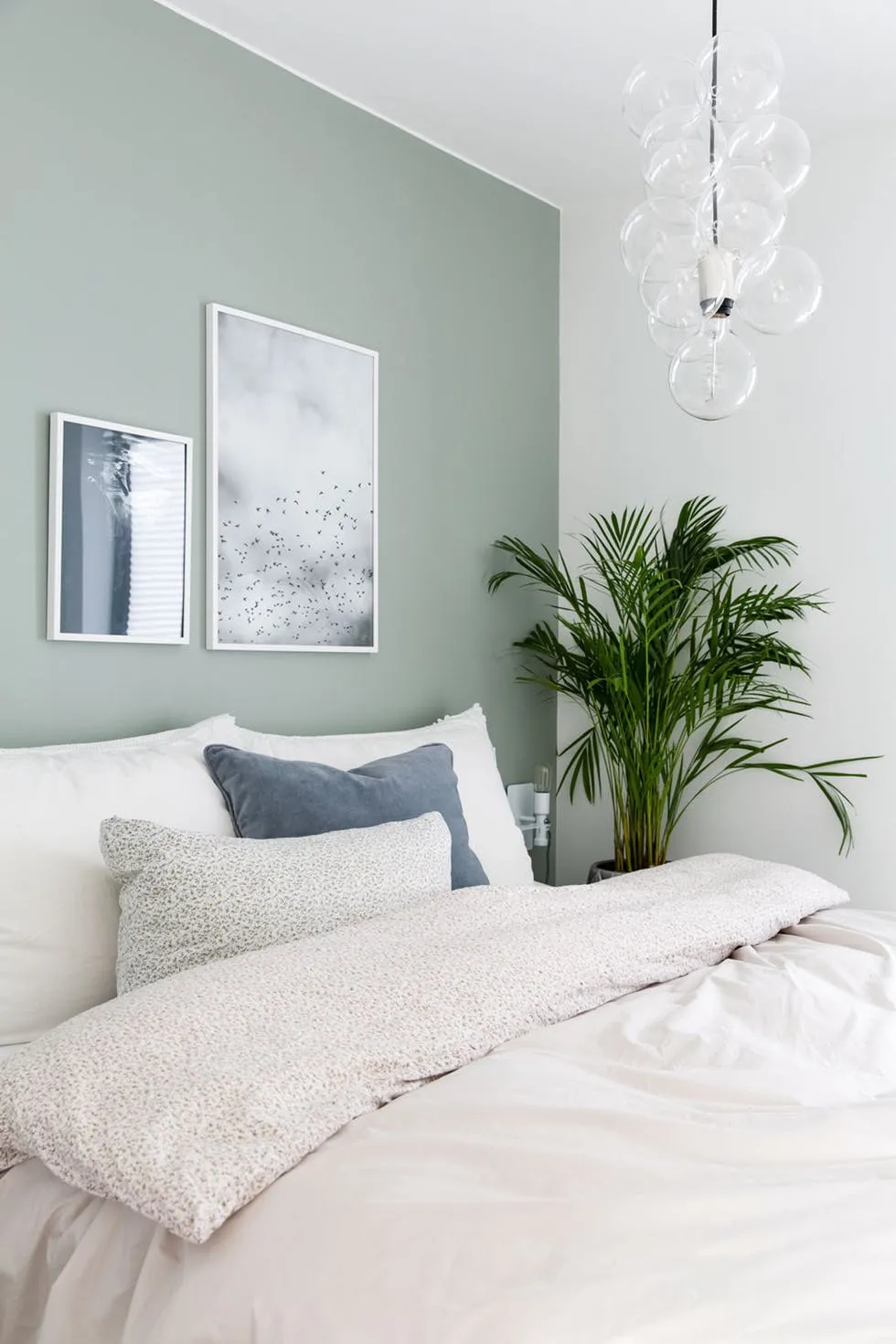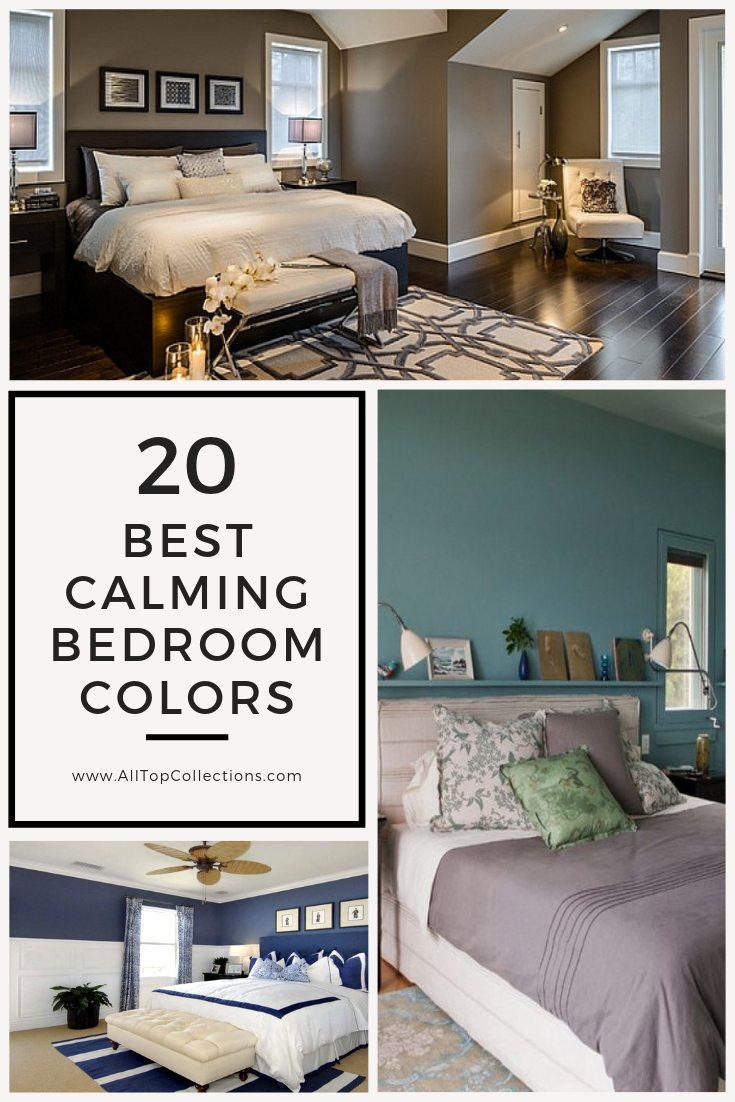5 Relaxing Bedroom Wall Colors to Help You Sleep

5 Relaxing Bedroom Wall Colors to Help You Sleep
Do you find it difficult to fall asleep at night? If so, your bedroom may be to blame. The colors of your walls can have a significant impact on your mood and sleep quality. In this article, we will discuss five relaxing bedroom wall colors that can help you get a good night's sleep.
1. Blue

Blue is the color of calm and tranquility. It is often associated with the sky and the sea, which are both known for their relaxing effects. Blue can help to create a serene and peaceful atmosphere in your bedroom, making it easier to wind down and fall asleep.
If you want to create a calming blue bedroom, choose a light shade of blue such as sky blue or powder blue. You can also add some darker blues to your decor, such as navy blue or midnight blue. Just be sure to avoid using too much dark blue, as it can be overpowering and make it difficult to relax.
2. Green

Green is another color that is often associated with relaxation. It is the color of nature, and it can help to create a peaceful and inviting atmosphere in your bedroom. Green is also a good color for promoting restful sleep. Studies have shown that exposure to green light can help to improve sleep quality.
If you want to create a relaxing green bedroom, choose a light shade of green such as sage green or mint green. You can also add some darker greens to your decor, such as olive green or forest green. Just be sure to avoid using too much dark green, as it can be too stimulating.
3. Gray

Gray is a neutral color that can create a calming and relaxing atmosphere in your bedroom. It is not as stimulating as other colors, such as red or orange, and it can help to promote a sense of peace and tranquility. Gray is also a good color for reflecting light, which can help to brighten up your bedroom and make it feel more spacious.
If you want to create a relaxing gray bedroom, choose a light shade of gray such as light gray or silver gray. You can also add some darker grays to your decor, such as charcoal gray or slate gray. Just be sure to avoid using too much dark gray, as it can be too depressing.

4. White

White is a classic color that is often used in bedrooms. It is a clean and fresh color that can create a bright and airy atmosphere. White can also help to reflect light, which can make your bedroom feel more spacious.
If you want to create a relaxing white bedroom, choose a light shade of white such as eggshell white or vanilla white. You can also add some darker whites to your decor, such as ivory white or snow white. Just be sure to avoid using too much dark white, as it can be too stark and cold.

5. Lavender


Lavender is a soft and calming color that is often associated with relaxation. It is the color of the flowers of the lavender plant, which are known for their soothing scent. Lavender can help to create a peaceful and relaxing atmosphere in your bedroom, making it easier to fall asleep.
If you want to create a relaxing lavender bedroom, choose a light shade of lavender such as lilac or pale lavender. You can also add some darker shades of lavender to your decor, such as deep purple or amethyst. Just be sure to avoid using too much dark lavender, as it can be too overpowering.
/Screen-Shot-2015-03-30-at-4.08.30-PM-56a192e65f9b58b7d0c0c291.png)
In addition to choosing the right colors for your bedroom walls, there are a few other things you can do to create a relaxing sleep environment. These include:
:max_bytes(150000):strip_icc()/Bedroom1_TahoeBlue-72743a4bf4494dd099a25f73afa07dde.jpg)

- Using blackout curtains or blinds to block out light.
- Keeping your bedroom cool and dark.
- Avoiding using electronics in your bedroom.
- Creating a bedtime routine.
By following these tips, you can create a relaxing bedroom that will help you get a good night's sleep.
/puritan-gray-56a08f195f9b58eba4b18cc1.jpg)
Key Takeaways

- The colors of your walls can have a significant impact on your mood and sleep quality.
- Blue, green, gray, white, and lavender are all relaxing colors that can help you get a good night's sleep.
- In addition to choosing the right colors, you can create a relaxing sleep environment by using blackout curtains or blinds, keeping your bedroom cool and dark, avoiding using electronics in your bedroom, and creating a bedtime routine.
5 Relaxing Bedroom Wall Colors for a Good Night's Sleep
Headline: Bedroom Wall Colors Relaxing

Intro:
When it comes to choosing the perfect bedroom wall colors, there are a few things to keep in mind. First, you want to choose a color that you find relaxing and inviting. Second, you want to choose a color that will help you to sleep better at night. And finally, you want to choose a color that will complement the rest of your bedroom décor.
In this article, we will discuss five of the most relaxing bedroom wall colors, along with some tips on how to use them to create a restful and inviting space.


Body:
1. Pale blue is a popular choice for bedrooms because it is associated with calmness and relaxation. The soft, muted tones of pale blue can help to create a serene and tranquil atmosphere, which is ideal for a bedroom. If you want to add a touch of personality to your bedroom, you can choose a pale blue with a slight gray or green undertone.

2. Light green is another great option for bedrooms. The soothing shades of light green can help to promote relaxation and reduce stress. Light green is also a good choice for bedrooms that receive a lot of natural light, as it can help to brighten the space.


3. Pale pink is a gentle and feminine color that can create a relaxing and inviting atmosphere in a bedroom. Pale pink is also a good choice for bedrooms that are used for meditation or yoga.
4. Cream is a neutral color that can create a warm and inviting atmosphere in a bedroom. Cream is also a good choice for bedrooms that are decorated in a traditional or classic style.

5. White is a classic choice for bedrooms because it is clean, bright, and airy. White can also help to create a sense of space in a small bedroom. If you want to add a touch of warmth to your bedroom, you can choose a white with a slight beige or gray undertone.


Conclusion:
The five colors listed above are just a few of the many options that you have when choosing bedroom wall colors. When making your selection, be sure to choose a color that you find relaxing and inviting. You should also consider the size and layout of your bedroom, as well as the overall style of your décor.

By following these tips, you can create a bedroom that is both stylish and relaxing, so that you can get a good night's sleep every night.


Additional tips for choosing relaxing bedroom wall colors:
- Choose a color that is light and bright. Dark colors can make a room feel smaller and more closed in, which can make it difficult to relax. Light and bright colors, on the other hand, can help to create a sense of space and openness, which is ideal for a bedroom.
- Choose a color that is not too stimulating. Avoid colors that are too bright or bold, as these can be distracting and make it difficult to relax. Stick to softer, more muted tones that will help to create a calm and serene atmosphere.
- Consider the overall style of your bedroom décor. When choosing a bedroom wall color, it is important to consider the overall style of your décor. If you have a modern or contemporary bedroom, you may want to choose a bolder color, such as a deep blue or a vibrant green. If you have a traditional or classic bedroom, you may want to choose a more muted color, such as a light gray or a soft beige.
- Don't be afraid to experiment. The best way to find the perfect bedroom wall color is to experiment. Paint a small section of wall with different colors until you find one that you love. You may be surprised at how different a room can look with a new coat of paint.
:max_bytes(150000):strip_icc()/Bedroom2_Nurturing-e02e3667ef9045859ea3fcc0aae51eb9.jpg)
Final word:
:max_bytes(150000):strip_icc()/Bedroom1_TahoeBlue-72743a4bf4494dd099a25f73afa07dde.jpg)

The color of your bedroom walls can have a significant impact on your sleep quality. By choosing a relaxing and inviting color, you can create a bedroom that is conducive to restful sleep. So take some time to experiment with different colors until you find one that you love. You may just find that you sleep better than ever before.

